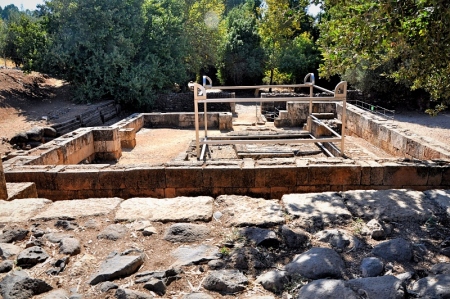The wisest man in all the earth fell flat on his face because he failed to give heed to God’s word. The sad story of Solomon’s apostasy is narrated in 1 Kings 11:1-13. As punishment God would “tear the kingdom” away from Solomon, and give it to Jeroboam (v.11). This took place when Solomon’s son’s effort to make a show of strength backfired, and all the northern tribes pulled away under Jeroboam, and made him king (1 Kings 12:1-24), leaving Rehoboam as king of Judah.
God had promised Jeroboam He would establish his rule in Israel, conditioned on obedience (1 Kings 11:29-38). But the temple was in Jerusalem (Judah’s territory); people throughout Israel would be making regular trips there to worship. Jeroboam thought that if he did not take matters into his own hands, Israel’s loyalty would shift to Judah. Therefore, he “devised in his own heart” four unauthorized changes in the divine pattern (1 Kings 12:25-33):
Object of worship. Jeroboam made two calves of gold and said, “It is too much for you to go up to Jerusalem. Here are your gods, O Israel, which brought you up from the land of Egypt! (1 Kings 12:28).
Place of worship. God had established Jerusalem as the place to worship. The king set up those golden calves in Dan (north) and Bethel (south) (v.29). Shrines were established on the high places for their worship at both sites (v.31).
Persons who officiated in worship. God had selected the tribe of Levi, and within it the family of Aaron, to be priests. Jeroboam “made priests from every class of people, who were not of the sons of Levi” (v.31).
Time of worship. God had designated the Feast of Tabernacles to be observed the 15th day of the 7th month; Jeroboam changed it to 15th day of the 8th month (v.32).
God was greatly displeased (1 Kings 14:9). Jeroboam sinned, and “made Israel sin” (v.14). Who would have thought that with those unauthorized changes Jeroboam was blazing a trail that would be followed by succeeding kings for 200 years? There were nineteen kings of Israel from Jeroboam to Hoshea; each of them “continued in the sins of Jeroboam.”
Our photo shows the high place at Dan where sacrifices were made to the golden calf Jeroboam installed. The people give a sense of scale.

Jeroboam's High Place at Dan. Photo by Leon Mauldin.
The square metal framework in center indicates the location and size of the altar. The shrine for the golden calf would have been in the area we are standing to shoot the photo.
Click on image for higher resolution.






 Posted by Leon Mauldin
Posted by Leon Mauldin 



